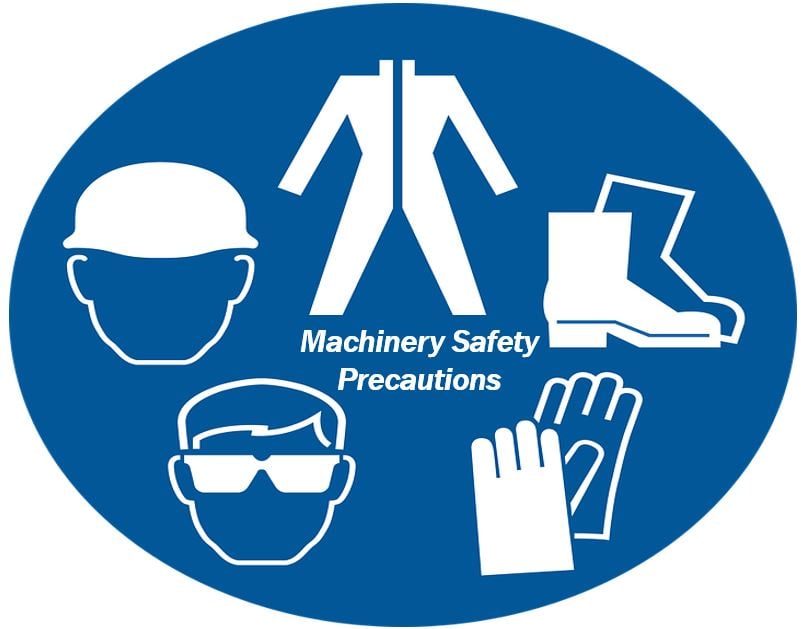 Efficient and effective production is at the core of every manufacturing business. The faster you manufacture quality products, the greater client satisfaction your business has, and he easier it is to take on new clients to scale for more profits. However, it is important to ensure your machinery is working properly, keeping production streamlined, and keeping workers safe.
Efficient and effective production is at the core of every manufacturing business. The faster you manufacture quality products, the greater client satisfaction your business has, and he easier it is to take on new clients to scale for more profits. However, it is important to ensure your machinery is working properly, keeping production streamlined, and keeping workers safe.
Machinery can be difficult to gauge. There are a lot of moving parts inside, and knowing what is happening with your machinery daily is important to the efficiency and effectiveness already discussed. To keep your manufacturing processes safe and working to the maximum, we compiled a few machinery safety precautions to consider. Let’s take a closer look!
1. Ensure your team is properly trained
Training is very important when it comes to safety. You most likely have a lot of machinery equipment in your manufacturing warehouse, and you may be surprised how little your employees know about all of the machinery. This is common, but dangerous. It is critical to be proactive when it comes to machinery training. After all, human error can be the cause of machinery damage, as well as employee injury.
To get your team trained up, create a training plan and schedule. This plan will have days and times each employee will learn the operation and safety precautions for each piece of machinery in your facility. You want everyone to be trained on everything. This is good for safety, and can be beneficial for your business, since anyone can operate all your equipment at any given time.
2. Use technology like a wireless vibration sensor for an innovative leg up
Employee error when operating or overseeing machinery is only one danger. The other dangers are within the equipment, because machinery is often complicated and mostly computer-supported these days. This makes employing technology to help one of the most important safety precautions for the life of your machinery, as well as your employees.
For instance, utilizing a wireless vibration sensor can measure machinery for reliable machine protection. This type of technology uses vibration analysis to monitor the condition of your equipment. This can be telling into what is happening within your machinery, and also allows you to decide if safety is compromised.
3. Be diligent about safety equipment being used while operating machinery
Gloves, eye protection, hearing protection, boots, and other safety equipment should always be worn when operating machinery. However, rules can be ignored, and this is when safety is compromised. Wearing the proper safety gear is also important for the safety of your machines. Your equipment is probably not cheap, and someone’s gear getting caught in that equipment can be very expensive. Make sure all authorized safety equipment is being worn and used on your facility floor.
4. Keep all interference with machinery operation out of the way
Unapproved safety gear and equipment can cause damage to your equipment, so be sure that all interference with efficient and effective production is out of the way. This is tied into the above machinery safety precaution, but you can take it a bit further. There are safety triggers and technology that can shut machinery down before a forieng object gets too far inside equipment, causing more damage then needed. This could be conveyor belt sensors, or laser activated, automated arm safety perimeters.
5. Machine loading and unloading is the most dangerous time
In most production facilities, the loading and unloading of machinery is the most dangerous times for machinery damage and employee injury. This could entail the loading of small materials that could cause human harm or deteriorate machinery over time. Or it could be heavy material, which is always a hazard.
Ensure that loading and unloading of machinery is a safety priority. To see what could potentially be a safety issue, spend some time watching the loading and unloading processes. Is it safe, what could be done better to ensure safety precautions, and save machinery from unnecessary damage? Make loading and unloading efficient, effective, and as safe as possible.
In conclusion . . .
The above machinery safety precautions are a great place to start. They are certainly not the be-all, end-all to production facility safety. The well-being of your employees is always a top priority, but also the health and condition of your machinery should be a priority as well. Most employee injuries result from machinery malfunction, so training and checking your machinery condition are two must-dos. How do you keep your production facility running smoothly and safe? We want to hear from you.

